Intervals 101 For Jazz Guitar
Oct 08, 2019Hello, jazz guitarists! This lesson will teach you about one of the basic building blocks of music - intervals.
An interval is the distance between two notes. We measure this distance using the unit of a semitone. (Think one fret on a guitar, or adjacent notes on piano.)
By the end of this lesson you'll have a good understanding of the basic intervals within one octave, how to identify them both on and off the guitar, and how you can use them to improve your jazz guitar playing.
Before we get into things, make sure to download this PDF of all the examples in this lesson. I'm old fashioned, okay? 😅
Download your "Intervals 101 For Jazz Guitar" PDF
Join our Community here.
What is an interval?
As we said earlier, an interval is the distance between two notes! This lesson will cover all the intervals contained within one octave (ex. from one C to another).
There are a series of commonly used names that we'll use to refer to these intervals which come from the chromatic scale.
These are used so that we don't have to say , for example, "5 semitones" - which requires too much mental math! 👎
This section will teach you:
- the common names of each interval
- a "song" or reference to remember what each one sounds like
- how to play it on guitar
Note that all the examples are in C, but the theory and shapes apply to all keys.
1. Perfect Unison (PU) 6:42
The first interval is kind of like a trick question - but it's a perfect unison! From one note, to... the same note. You won't use this much when you're playing alone but it can be helpful when you're arranging for multiple instruments.
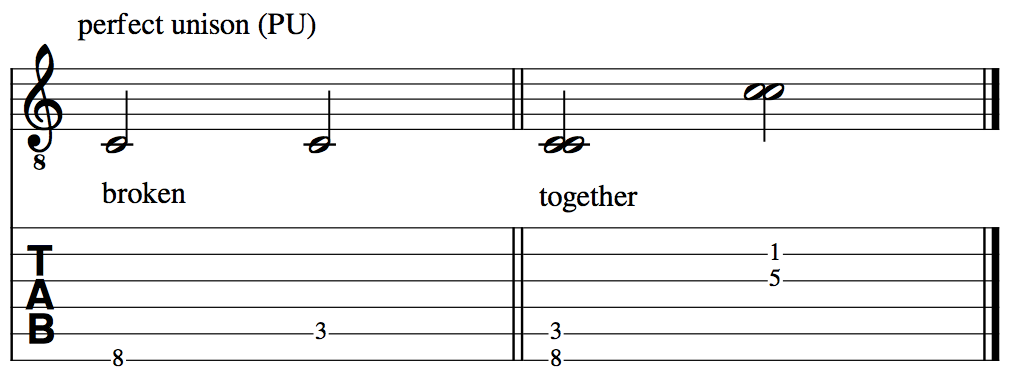
If you need a sonic reference for a perfect unison, just think of the song "One Note Samba" 😜
2. Minor Second (m2) 6:49
A minor second is one semitone, or the distance from one fret to the next. Depending on the context, it can have a rather dissonant or "crunchy" sound.
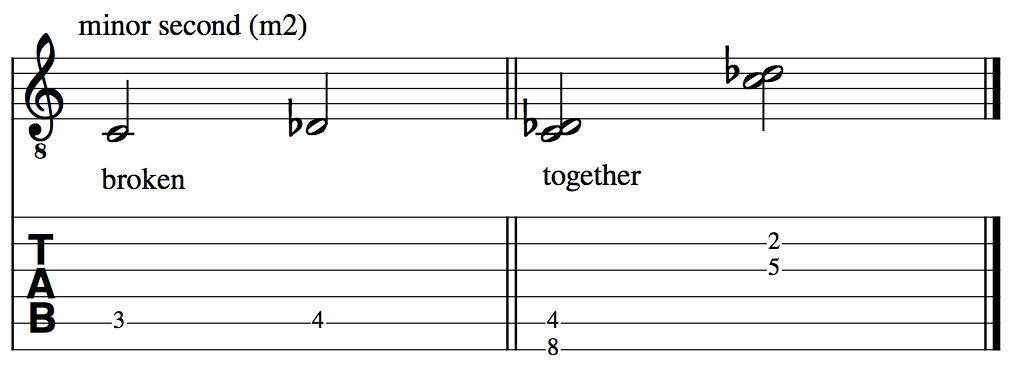
To remember the second of a minor second, just think of the theme from Jaws.
3. Major Second (M2) 7:27
A major second is two semitones, aka two frets apart. Sometimes this is called a "whole tone".
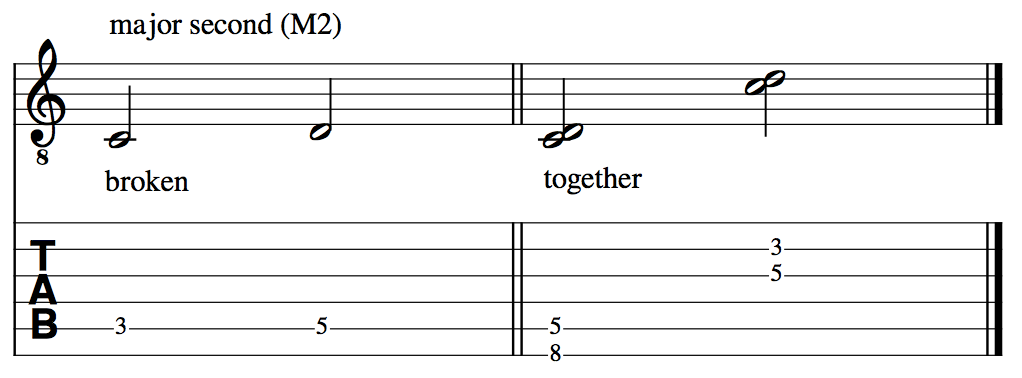
An easy way to remember the sound of a major second is to think of the first two notes of a major scale! 🎵Do - Re🎵
4. Minor Third (m3) 8:03
Now that the intervals are getting wider you're going to want to think of them as they relate to scales, rather than semitones.
With this mindset, just think of a minor third as the third note of any minor scale. Or, if you prefer major scales, think of it as the third note of a major scale down a semitone.
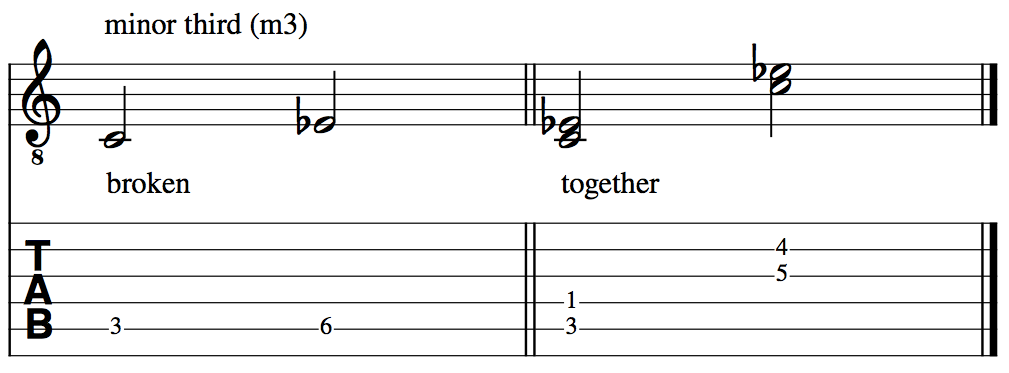
My reference song for this is a little patriotic - the first notes of O Canada. If you're not Canadian, just think of a minor triad arpeggio!
5. Major Third (M3) 8:48
A major third is the distance from the first note of a major scale to the third note. It can be surprisingly tricky to identify this sound under pressure!
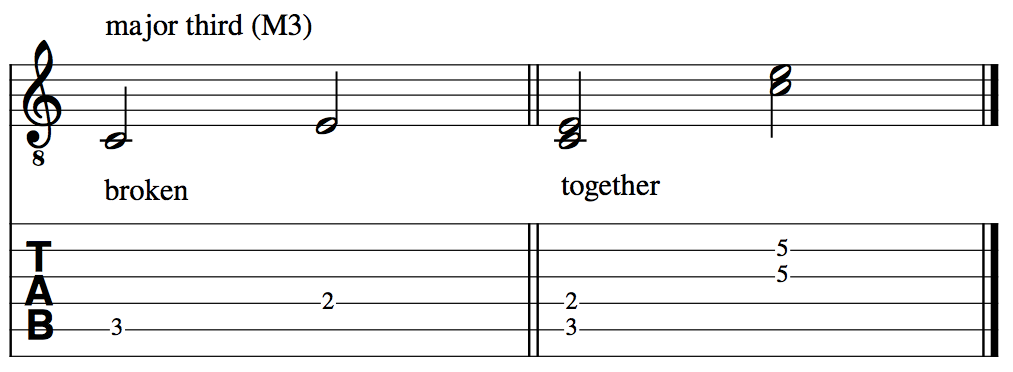
To help remember major thirds, just get into the holiday spirit and sing a little bit of Have Yourself A Merry Little Christmas. 🎅
6. Perfect Fourth (P4) 9:38
You read that right, perfect fourth! That's quite a name to live up to...
For an advanced mathematical reason, we refer to fourths, fifths and octaves as either perfect, augmented and diminished. Blame Pythagoras, not me!
A perfect fourth is the distance from the first note of a major scale to the fourth note.

Our song for this one is the classic jazz standard, All The Things You Are. The whole tune is basically a study in fourths!
7. Tritone (d5) 10:09
This one has many names - tritone, augmented fourth, diminished fifth. It was once even called The Devil's Interval due to its perceived dissonance.
You'll want to think of the tritone as a perfect fourth plus one semitone. It also divides the octave into two even parts.
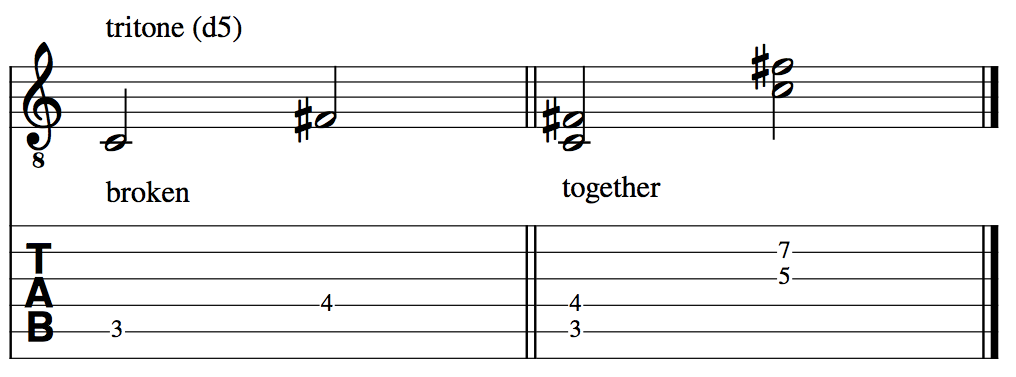
To remember the sound of a tritone, think of the theme from The Simpsons, or YYZ by the band Rush.
8. Perfect Fifth (P5) 10:33
A perfect fifth is the distance from the first note of a major scale to the fifth note. You might recognize this one as a power chord ⚡
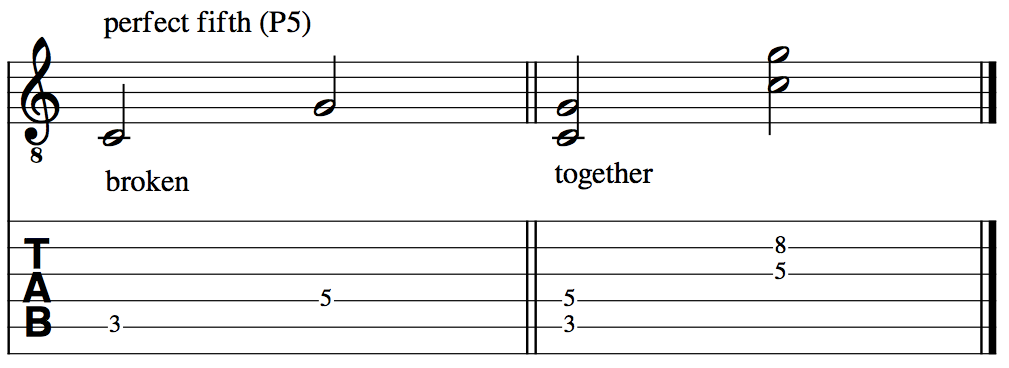
If you've heard the main theme of Star Wars, then you already know what a perfect fifth sounds like!
9. Minor Sixth (m6) 10:55
We're almost there! A minor sixth can be thought of as the distance from the first note of a natural minor scale (Aeolian) to the sixth note. Or, just think of a perfect fifth plus on semitone!
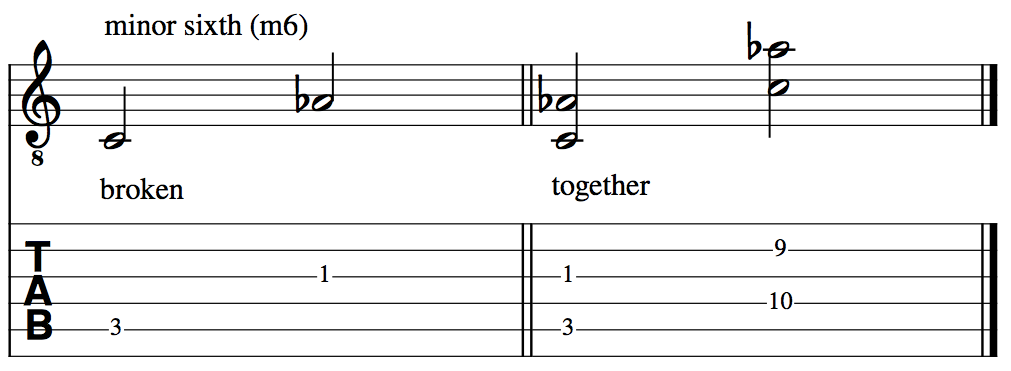
For this reference we'll use another jazz standard, Black Orpheus. It's composed by the great guitarist Luiz Bonfa!
10. Major Sixth (M6) 12:04
This is a really pleasant sounding interval - it's the distance between the first note of a major scale to the sixth note.
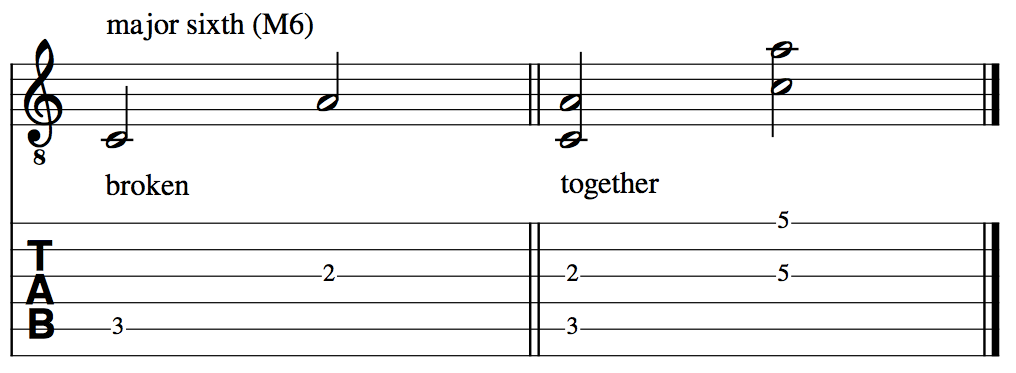
Keeping with the jazz theme, we'll use The Days Of Wine And Roses to remember the sound of the major sixth.
11. Minor Seventh (m7) 12:19
Not to be confused with the minor seventh chord. Think of this one as the first note of a natural minor scale to the seventh note. Or, up an octave, then down two frets.
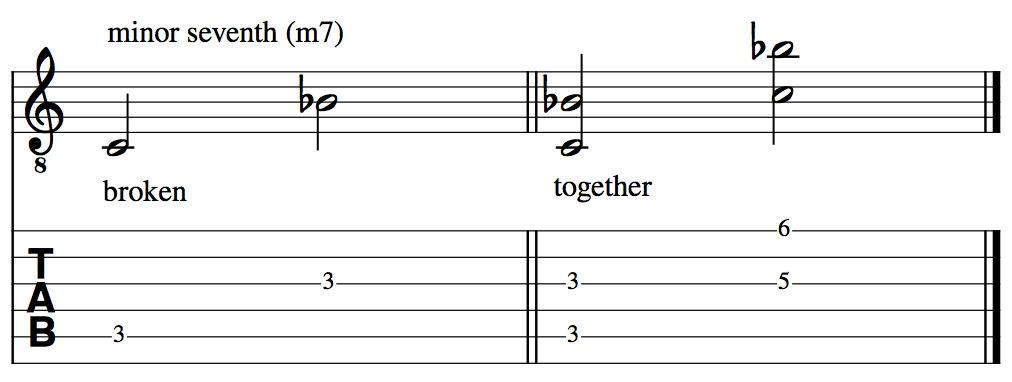
Don't worry, we won't take sides in the Star Wars vs Star Trek debate! This interval can be remembered by thinking of the Star Trek theme song.
12. Major Seventh (M7) 13:09
The favourite interval of musicians like Monk, and Bill Frisell. It's the distance from the first note of a major scale to the seventh note.
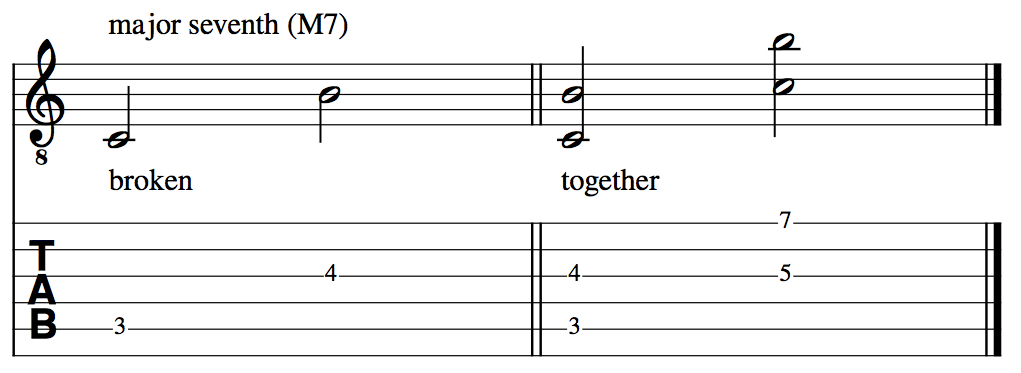
There aren't many famous songs that use this interval, so what we'll do instead is just think of up an octave, down one fret.
13. Perfect Octave (PO) 13:44
And last but not least, the perfect octave! This one is the distance from the start of the scale to the end of the scale. 🎵Do-Re-Mi-Fa-So-La-Ti-Do 🎵
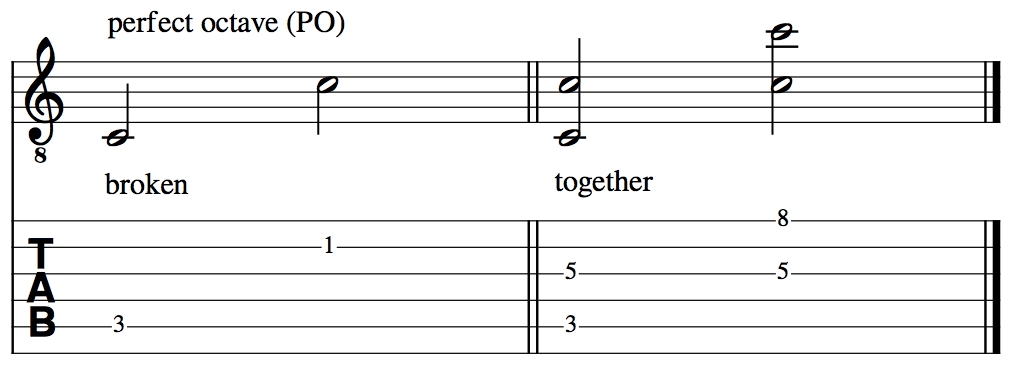
The interval song for a perfect octave is Somewhere Over The Rainbow.
Now you can unleash your inner Wes Montgomery!
How to apply this to jazz
Now, you may be thinking, "that's all well and good Marc, but how do I actually use this stuff as a jazz guitar player?" 🤔
Funny you should ask! That's exactly what we'll cover in this next section.
Chords are built from intervals 15:44
One result of learning intervals is that your understanding of chord voicings will become much deeper. This is because chords are really just stacks of intervals!
Let's take Cma7 as an example. We'll look at two different voicings that contain the same notes (C E G B), but have a totally different "vibe" or feeling.
example 1:
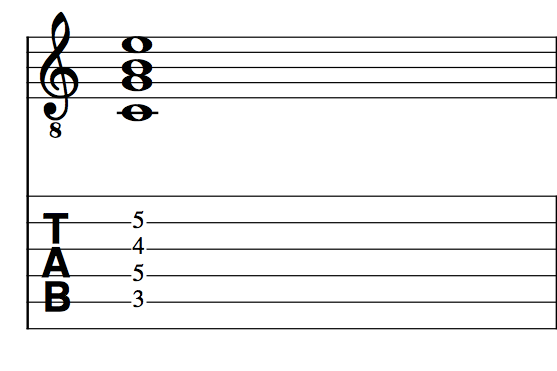
This is a very typical drop two voicing that has a very "smooth" sound. This is because it takes the two dissonant notes (C and B) and spreads them out, surrounding them with consonant intervals like major thirds (C - E) and perfect fifths (C - G).
example 2:

Now, here's a first inversion Cmaj7 chord. It has a much darker sound compared to example 1. This is because of a few different reasons - check out how the dissonant notes, C - B, are arranged. In a minor second!
So, right away there's that tension on full display. Then, we have the added fact that this voicing is also two fifths stacked on top of one another (E-B, and C-G).
This combination results in a very moody-sounding chord voicing.
That's just the tip of the iceberg with this stuff! Try to analyze your favorite voicings and pinpoint what you like about their interval structure. Knowing what you like can help your playing sound more original.
Intervals in Chord Progressions 20:45
You might be surprised to know that many of our chord progressions in jazz are based on a single interval - the fourth!
Let's look at a ii-V-I in C.
Dm7 - G7 - Cma7
If you look at the roots of each chord, you get D - G - C.
D --> G is a perfect fourth. G --> C is a perfect fourth as well!
Some tunes take this concept and really run with it. Let's look at the first section of All The Things You Are:

Let's analyze the roots: F -->Bb --> Eb --> Ab
You'll notice immediately these roots are all moving up a fourth! That's why this progression and others like it are often given called the cycle of fourths.
The rest of the tune continues this idea through other keys! Plus, the melody also moves in fourths - it's a pretty clever tune.
Implying Chords With Intervals 26:01
This next section is best attempted once you have a good handle on the stuff we've already covered. Pace yourself!
This next concept comes from musicians like Bill Evans and Lenny Breau. They developed an approach to comping that involves using two notes (an interval) to imply a larger chord.
The best way to get started with this to the play the essential tones of seventh chords - the 3rd and 7th. Even without all the other notes, these two notes are enough to imply the sound of the full chord.
Let's try this on a ii-V-I in F major.
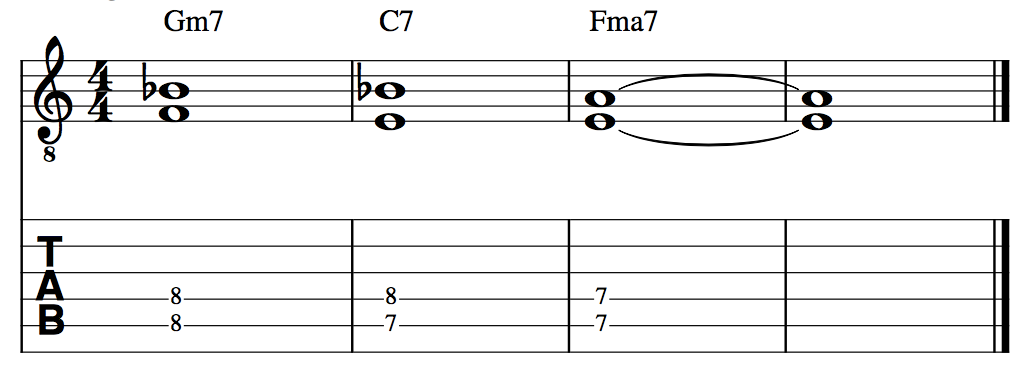
Neat, right? You'll notice that the 3rd and 7th often forms the interval of a fourth (or a fifth if you invert it). Fourths, they're everywhere in jazz!
If you like this sound, I recommend trying to use this technique throughout an entire tune. Beautiful Love is a great tune for this.
We've prepared an interval comping etude on the entire tune for you here! Melody on top, 3rds and 7ths on the bottom. You could say that a lot of these intervals are... perfect 💯
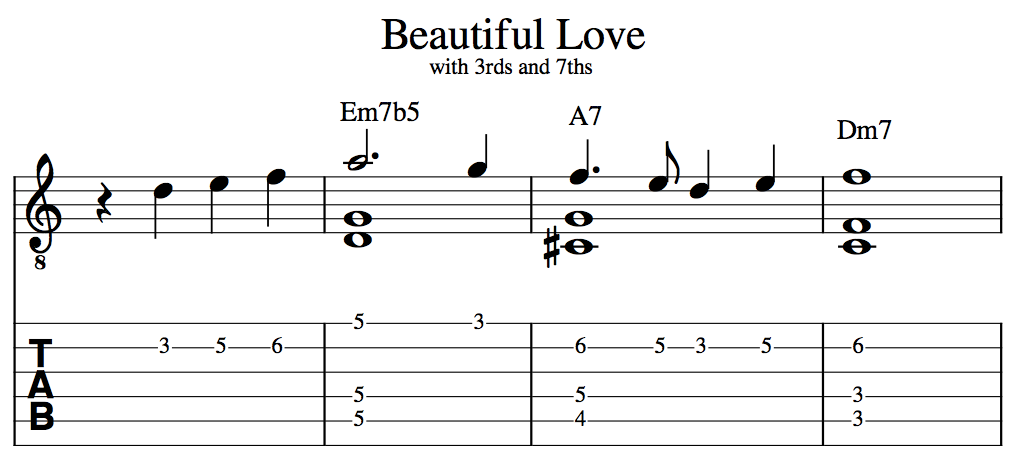
Get the full arrangement in this "Intervals 101 For Jazz Guitar" PDF
Join our Community here.
Note that the rhythms for the comping are meant to be improvised. Click here to hear me try this!
It can be tough to memorize where these voicings are at first, so here's a tip - try visualizing the root on the fretboard (even though you're not actually playing it) and see how the voicing relates to it physically.
This is a great way to get out of a rut with chord melodies - you don't always need a huge chord voicing underneath the melody. Next time, try just playing an interval!
Wrapping Up
If you're just getting into all this, make sure to spend just a little bit of time each practice session on intervals. It takes time for your ear to get familiar - you can't just memorize the sounds in a day.
A good approach would be to:
- Learn what each interval sounds like,
- Learn how to play them on the guitar
- Try to use them in creative ways, like we did in the last section
To finish things off, check out this great study tool. Interval education over a latin jazz backdrop... it works surprisingly well! 🏝️









